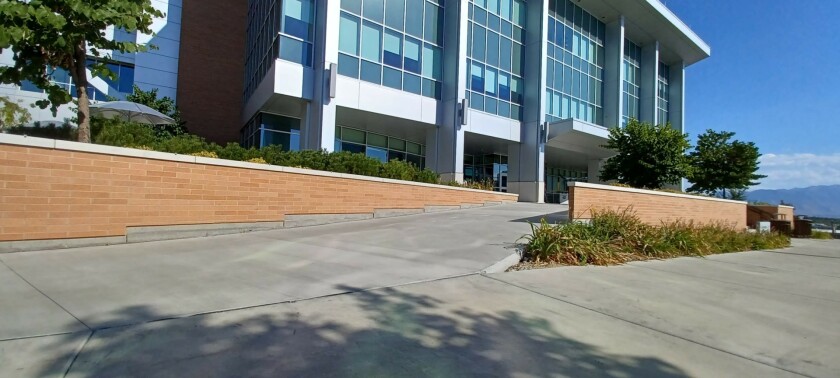
BYU has recently renovated 11 ramps in order to meet Americans with Disabilities Act requirements after an internal survey performed by supervised BYU civil engineering students found that many ramps were out of compliance.
Locations of recent work include ramps west of the Engineering Building, south of the Kennedy Center and south of the Benson Building, among others. Work includes adjusting the slope of the ramps, handrail lengths and other small changes to meet ADA standards.
The Americans with Disabilities Act of 1990 was passed with the intention of increasing accessibility for those reliant on mobility aids such as wheelchairs via a set of standards that publicly accessible areas must meet.
Such standards stipulate the maximum slope of a ramp, the required length of handrails, and the presence of some form of guard to prevent a wheelchair from falling from the ramp entirely.
“We know the requirements of the code really well,' said Brandon Bitter, a civil engineer within the BYU Physical Facilities department. 'Based on how many things were out of compliance, we’d say, well yeah, we should definitely replace that or fix this handrail.”
BYU Physical Facilities architectural designer Gary Hone said it typically takes about a year to begin a project after a complaint is raised.
Hone said none of their funding comes from federal grants but instead comes from BYU. The overall cost of a project depends on its size, but typically ADA ramps cost around $250,000 per year.
“We just do what we can to make everything ADA compliant,' Hone said. 'We have very few complaints that come through and I continue to follow through on those.”
Even in cases where ADA compliance is not legally binding due to grandfathering laws, BYU will take action to provide maximum accessibility for all students.
Regarding complaints, Bitter said, “We are mostly trying to keep ahead. Occasionally we get some people saying, ‘Oh, this building doesn’t have a ramp and I can’t get in it any way with my wheelchair,’ and those are obviously the higher priority ones.”

Bitter also said there is a campus map that lists accessible routes on campus so students can find the shortest path.
BYU student Lydia Pullan has been using a scooter-style mobility aid for about four months due to a recent surgery. Overall, she said she feels every building on campus has been accessible, but that she has been late to class many times due to difficulty finding the ramps, elevators and accessible entrances.
“It’s never direct and clear. It would be nice if there were signs or something,” Pullan said.
Maren Cooper, a BYU student, also attempted to use a scooter on campus but said she found it much more difficult.
“I used it on the first day of class and it was terrible”, Cooper said. “Finding a route that was scooter-friendly was really difficult. All of the accessible routes take so much longer.'
Cooper discovered while working on her on-campus job that construction can obstruct a route that otherwise is the shortest accessible path. She also noted the JKB is particularly difficult to navigate when stairs are not an option.
“It’s really been interesting kinda having this glimpse into what it’s like to need to find accessible routes,” Cooper said.